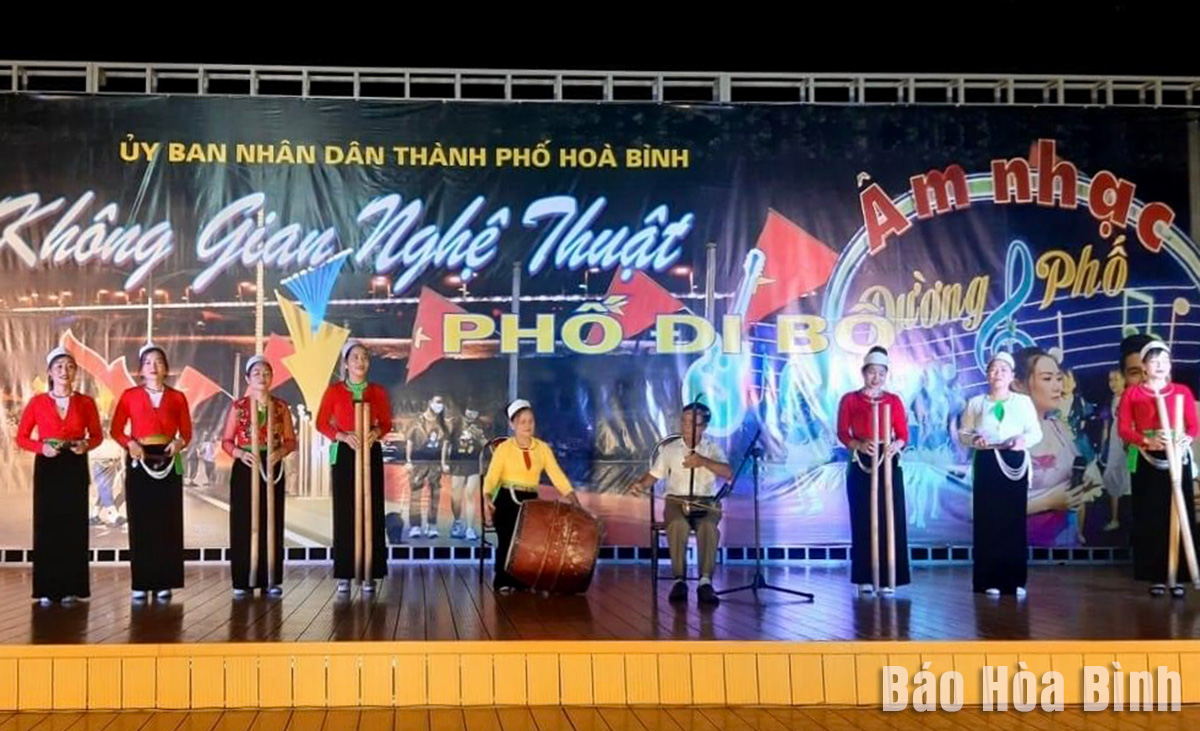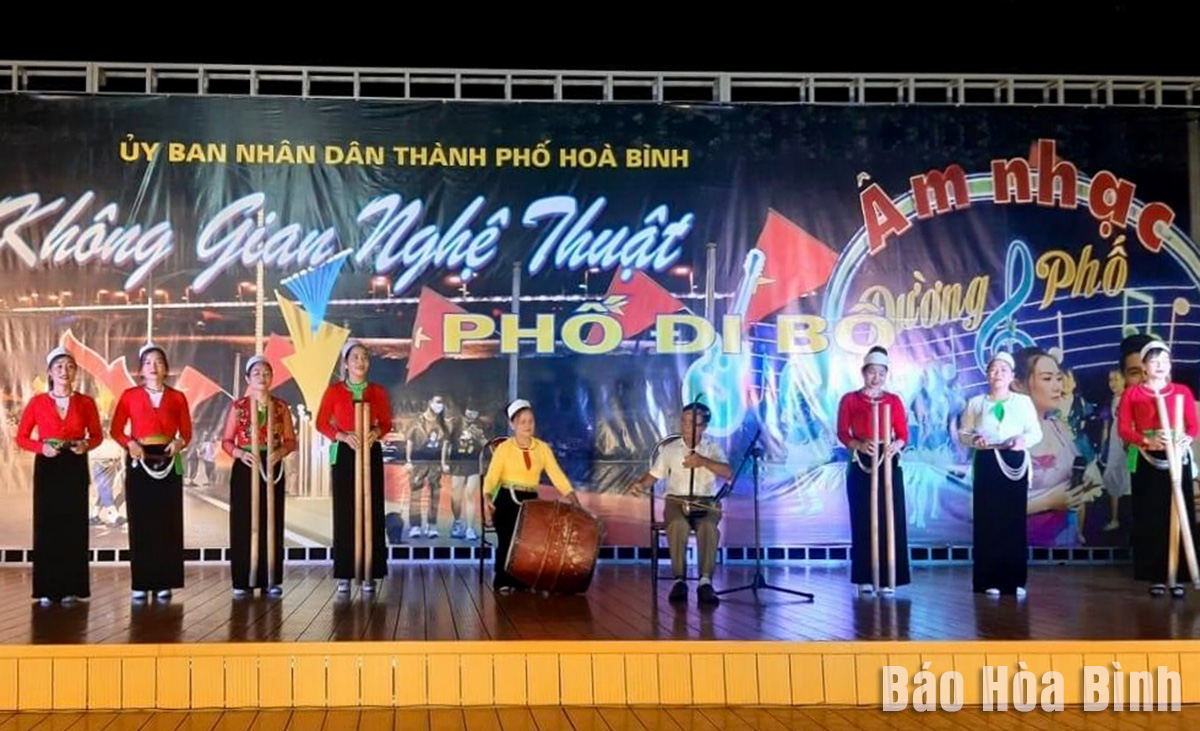
Quang Tien commune in Hoa Binh city, home to over 1,300 Muong ethnic minority people, has worked to preserve and promote the traditional cultural traits of the group.
Members of Quang Tien commune art team
delivers stellar performances on the Da Giang pedestrian street, Hoa Binh city.
The commune has organised cultural and sport
activities to mark important events, including the founding anniversaries of
the Communist Party of Vietnam (February 3) and the Ho Chi Minh Communist Youth
Union (March 26), the International Women’s Day (March 8), and the National Day
(September 2). The Muong ethnic folk singing, gong performance, cloth ball
throwing, crossbow shooting, and folk games, among others, have been featured
at the events.
Various cultural preservation clubs and art groups
have been set up, and equipped with musical instruments, helping inspire the
love for traditional culture among local residents.
Other ways to protect the Muong ethnic culture
are holding performances of the ethnic costumes, and organising "banh uoi”
making contest, among others.
According to Vice Chairman of the communal
People’s Committee Nguyen Cuong Bien, the most standout features of the Muong
ethnic group have been kept alive thanks to local preservation efforts.
The People’s Committee of Lac Son district held a ceremony on April 28 to receive the provincial relic certificate for the ancient rock carving site at Suoi Co stream, located in My Thanh commune.
A special music show titled "The country is in the fullness of joy” has been held at Hoa Binh Square in Hoa Binh city in celebration of the 50th anniversary of the liberation of the South and national reunification (April 30, 1975–2025).
The People's Committee of Lo Son commune, Tan Lac district, has organised the local annual traditional stream fishing festival on April 19 - 20.
As a land deeply intertwined with human history and Vietnam’s millennia-long journey of nation-building and defence, Hoa Binh is often revered for its epic tales and legends.
Residents of Hoa Binh boast a rich cultural identity, reflected in their unique language, traditional attire, customs, and folk melodies – described as "sweet as honey, clear as a mountain stream.”
Lac Son district’s Vu ban town held the 2025 Truong Kha temple festival on April 12–13 (the 15th–16th days of the third lunar month). Since its revival in 2019, the festival has been organised every three years, preserving valuable intangible heritage while meeting the community’s cultural and spiritual needs.



